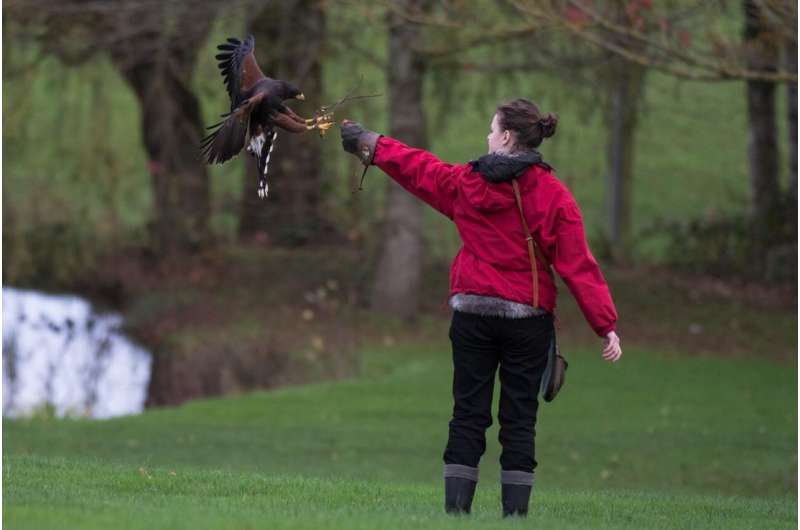June 30, 2022 report
Perching behavior of hawks suggests ways to improve perching by drones

A quartet of researchers at the University of Oxford's Department of Zoology has found that a careful look at the way large birds perch could perhaps lead to improvements in the ways that drones are programmed to land. In their paper published in the journal Nature, Marco KleinHeerenbrink, Lydia France, Caroline Brighton and Graham Taylor describe their close analysis of perching by Harris hawks and what they learned about how and why they land on perches the way they do.
Human-made aircraft tend to land best on the ground where perching skills are not really needed. Birds on the other hand tend to prefer touching down on tree branches or electrical wires. Prior research has shown that small birds can perch by flying directly to their destination and then hovering slowly as they touch down. Larger birds, however, are not very good at hovering, so they have to take a different approach. They tend to swoop down and then pull up prior to perching with their feet sticking out ready to grab hold of their target. In this new effort, the researchers took a closer look at perching behavior in raptors by using a high-speed camera to film Harris hawks as they perched.
To get a variable view of the perching done by the hawks, the researchers set up several perches in their lab a couple of meters apart. They then placed multiple cameras around the perches to capture every detail of the action. They also used three young male hawks who had not perfected their perching technique and one adult female who had it down pat. To help with capturing the movement of individual body parts, the birds were marked and wore reflective backpacks.
Once the birds were filmed, the results were fed into a computer model that allowed for creating highly accurate 3D simulations of the perching action. Then, in studying the simulations, the researchers were able to see in minute detail every action involved in perching. They found that the birds began their approach with a swoop, as expected. That was followed by a quick dive and then a series of rapid wingbeats that served to push the bird a little higher. Doing so led to a stall that allowed the birds to reach out and grab their target. The researchers also found that the birds learned to do the maneuver on their own through experimentation and that there were only tiny differences in the procedure between birds due to slight differences in body features.
More information: Marco KleinHeerenbrink et al, Optimization of avian perching manoeuvres, Nature (2022). DOI: 10.1038/s41586-022-04861-4
Journal information: Nature
© 2022 Science X Network




















